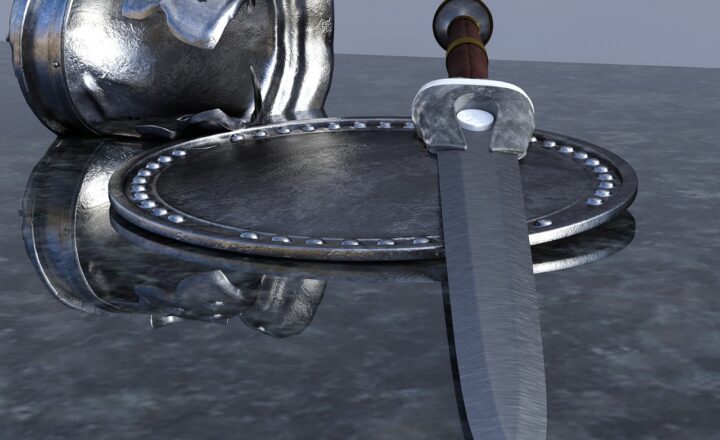Unraveling the History of Weaponry: From Ancient Tools to Contemporary Conflict
November 18, 2024

Weaponry has played a pivotal role in shaping human history, influencing civilizations, cultures, and conflicts throughout time. From primitive tools used for hunting to sophisticated military technology, the evolution of weapons reflects advancements in science, technology, and society’s needs. This comprehensive article delves deep into the fascinating history of weaponry, examining its development, significance, and impact on warfare and society.
1. The Dawn of Weaponry: Ancient Tools and Primitive Weapons
The history of weaponry can be traced back to humanity’s earliest days. Our ancestors created simple tools primarily for hunting and defense. The first weapons were made from stones, wood, and bones, highlighting the ingenuity of early humans who crafted tools to ensure survival.
– Stone Tools: Early humans fashioned sharp stone tools as both hunting instruments and weapons for protection against predators. The evolution from simple hand axes to more refined spears marked significant milestones.
– The Spear: One of the oldest and most effective hunting weapons, spears allowed early humans to hunt larger prey from a safe distance.
– The Bow and Arrow: Dating back to around 20,000 BCE, the bow and arrow revolutionized hunting, enabling precision and increased range.
This early period in weaponry not only speaks to human ingenuity but also to the fundamental need for survival.
2. The Rise of Civilizations and Advanced Weaponry
As societies evolved and civilizations emerged, the complexity and craftsmanship of weaponry advanced significantly. The development of metalworking led to an era of more effective and durable weapons.
– Bronze Age Weapons: The introduction of bronze around 3000 BCE saw the creation of swords, shields, and tools that were stronger and more versatile than their stone predecessors.
– Swords: Swords became symbols of power and status. Various cultures, including the Sumerians, Egyptians, and later the Greeks and Romans, developed distinct sword styles designed for combat effectiveness.
– Chariots: In ancient warfare, chariots revolutionized battlefield tactics, providing mobility and speed to armies while delivering deadly attacks from a distance.
– Iron Age Developments: With the discovery of iron, weapons became even more powerful. Iron swords and spears gave rise to new warfare strategies, influencing the outcome of battles.
This era marks a fundamental shift as technology and warfare interlinked with the advent of organized armies and state-sponsored conflicts.
3. The Middle Ages: The Dawn of Firearms
The Middle Ages ushered in the era of knights, castles, and the development of more destructive weaponry, culminating in the rise of firearms that would forever change the landscape of warfare.
– The Crossbow: With a mechanism that allowed for greater precision and ease of use, crossbows were crucial in siege warfare, giving the user a significant advantage.
– Gunpowder and Firearms: The introduction of gunpowder in the 9th century brought about a revolution in armaments. The first firearms, including hand cannons and arquebuses, began to appear on battlefields, rendering traditional armor less effective.
– Artillery: Large-scale weapons, such as cannons and trebuchets, changed the dynamics of warfare. They allowed armies to besiege fortifications and inflict devastating damage from a distance.
– Siege Warfare: The importance of artillery in siege warfare marked a turning point in how wars were fought and won.
This period of history illustrates the escalating arms race among nations as they sought superior weaponry to assert dominance.
4. The Industrial Revolution and Modern Warfare
In the 18th and 19th centuries, the Industrial Revolution drastically transformed weaponry. Rapid technological advancements resulted in innovations that would define modern warfare.
– Rifled Firearms: The rifling of gun barrels improved the accuracy and range of firearms, changing tactics on the battlefield.
– Machine Guns: The advent of machine guns during the late 19th century revolutionized combat, enabling armies to deliver sustained fire and causing unprecedented casualties.
– Artillery Advancements: More accurate and powerful artillery pieces changed military strategies, with long-range cannons becoming standard on the battlefield.
– Naval Warfare: The transition from wooden sailing ships to ironclad warships altered naval combat, leading to the rise of the battleship era.
Weaponry became a central element in conflicts as nations amassed vast arsenals, leading to massive-scale wars with devastating consequences.
5. The 20th Century: A New Era of Warfare
The 20th century witnessed significant changes in warfare, particularly during the two World Wars, which saw the development and use of various new weapons technologies.
– Tanks and Armored Vehicles: The introduction of tanks revolutionized ground warfare, providing unparalleled firepower and mobility.
– Air Warfare: The development of military aircraft changed the nature of combat, enabling aerial bombings and reconnaissance missions that altered strategic planning.
– Nuclear Weapons: The use of atomic bombs in World War II ushered in a new era of warfare, introducing the concepts of deterrence and global security concerns.
The complexities of modern warfare, driven by technological advancements and innovation, began reshaping international relations and ethical considerations surrounding conflict.
6. Contemporary Weaponry and Future Trends
In the 21st century, weaponry continues to evolve rapidly, often driven by technological advancements and geopolitical shifts. Today, weaponry encompasses a wide range of technologies, including:
– Cyber Warfare: With advances in technology, cyber attacks have become a major form of conflict, representing a shift in how warfare is conducted.
– Drones and Unmanned Systems: The rise of drone technology has led to new battlefield tactics and surveillance capabilities, influencing both military strategies and ethical discussions surrounding warfare.
– Artificial Intelligence in Warfare: AI-driven technologies are beginning to impact weaponry and strategy, leading to discussions about the implications for future conflicts and the importance of regulation.
The future of weaponry poses complex questions and challenges, as technology continues to outpace international agreements on ethics and warfare regulations.
Conclusion
From primitive tools to advanced technologies, the history of weaponry reflects humanity’s progress, innovations, and the challenges of conflict. Each era has contributed to shaping not only military tactics but also societal norms and politics across countries. As we explore the future, understanding the evolution of weaponry is crucial to addressing contemporary challenges and navigating the moral dilemmas posed by new technologies in warfare.
As weaponry continues to evolve, society must grapple with its implications for conflict, ethics, and global security in an ever-changing world.







